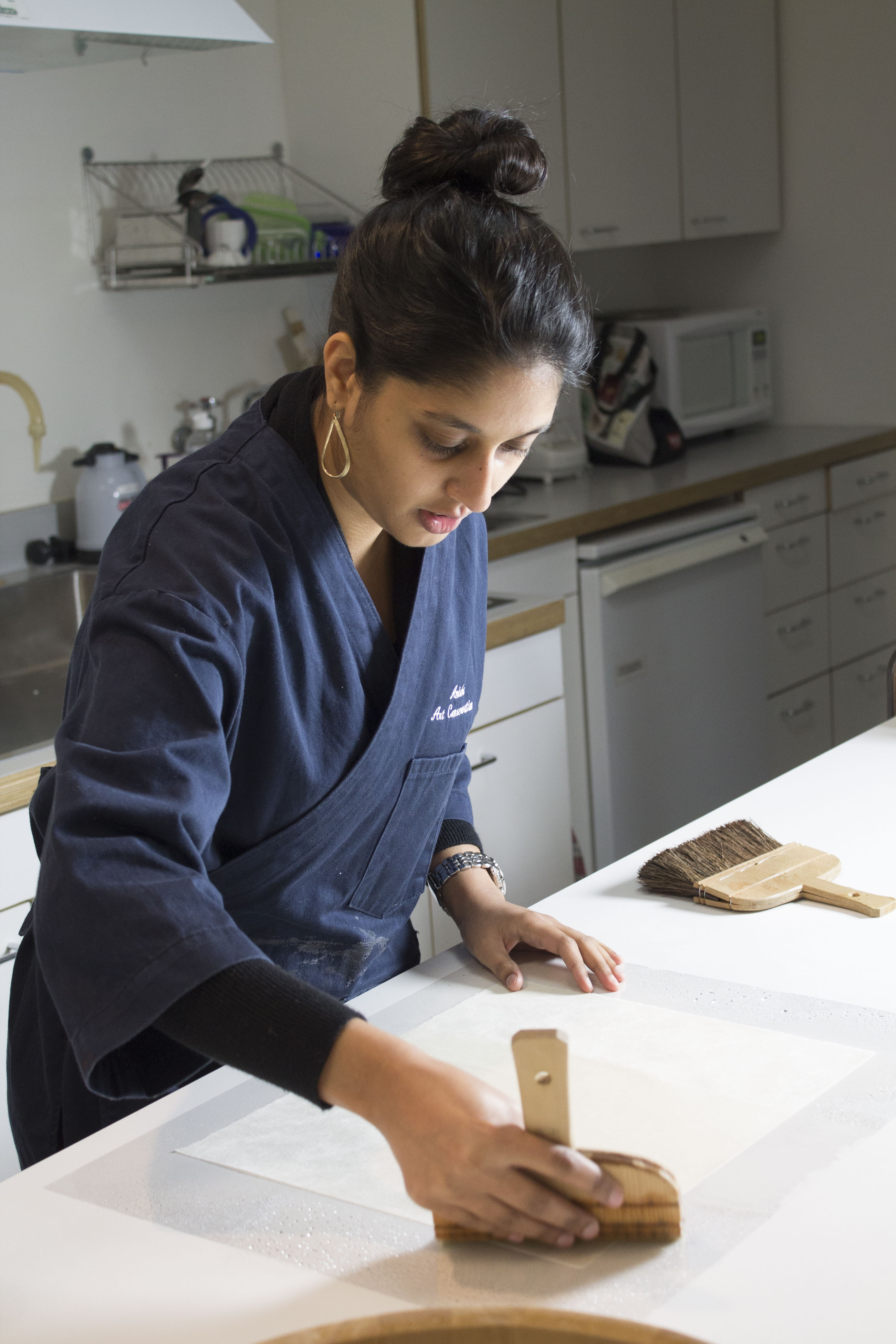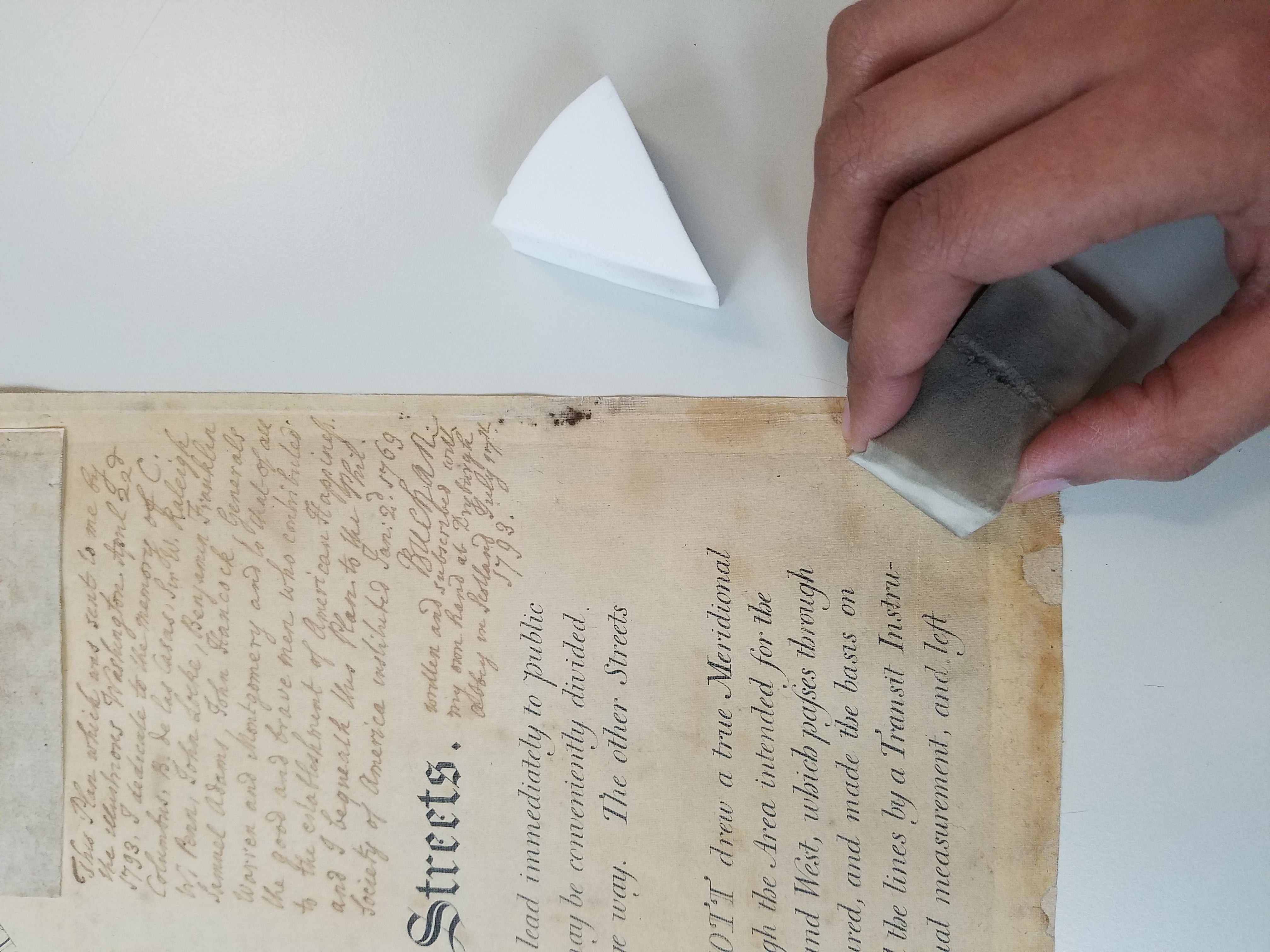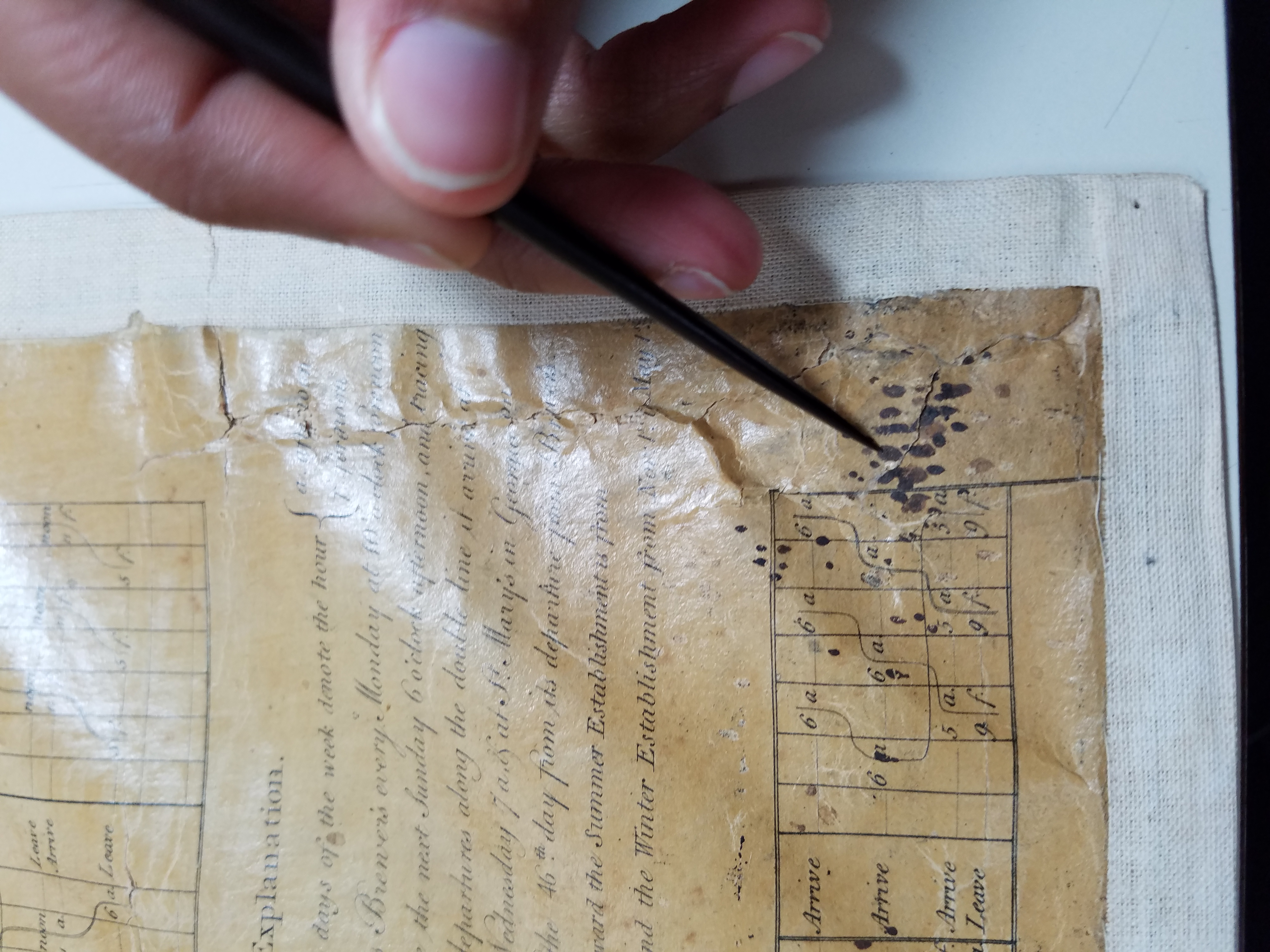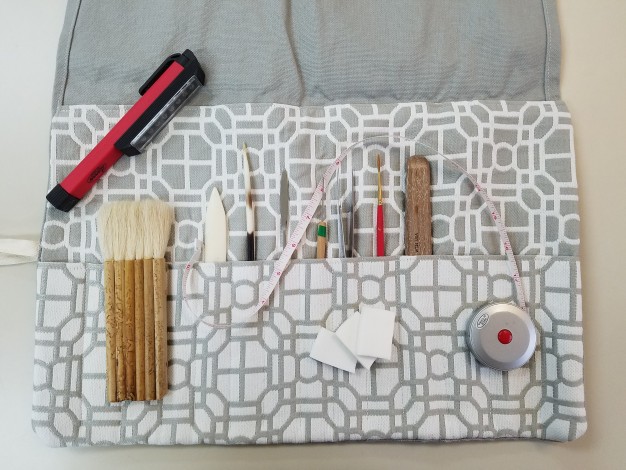Inside A Paper Conservator’s Toolkit
Paper conservation treatment can range from cleaning soot off an old map to mending tears in a letter to putting a print in a water bath conditioned with various chemicals. This leads conservators to pull from all sorts of fields to find just the right tool for the job.
Conservators employ a lot of modern science in our work, but we look to the past, too. Paper conservators particularly draw from traditional scroll-mounting techniques developed in Japan. Scroll-mounting dates back centuries, and paper conservation has adopted several of its traditional tools that have been designed and refined over the centuries. Scroll-mounting brushes are carefully constructed with specific materials depending on their role. For example, the noribake brush, made with goat hair, is soft and dense, perfect to smooth out the clumps that can form in paste, which is used frequently in paper conservation. Paper conservators will also often attach a work to a fresh secondary sheet of paper that serves to stabilize the work. To attach the papers, we use the uchibake brush, which is comprised of thick hemp fibers making it rigid and therefore useful for careful tapping of the secondary support to make sure the two papers are well adhered to each other.

While Japanese brushes are specially designed and hand-crafted, we also turn to commonly found materials. Make-up sponges are of course originally designed to help people look their best, but they can help paper works look their best, too. With their smooth surfaces and ergonomic shapes, make-up sponges are often used to clean paper. These sponges have small pores that allow them to pick up and hold dirt from the surface of paper. We use particular brands that have been tested and are safe for conservation work.

On a less alluring note, the blemishes we sometimes see on paper are something you might not expect: insect poop. These unsightly specks where insects spent a little time are surprisingly satisfying to remove. Luckily, while the animal kingdom has left us this mess, it has also given us a great way to clean it up: porcupine quills! With its sharp and pointy tip and hollow interior, it is ideal to pick at the minuscule black specks without much pressure. This leaves behind a cleaner sheet of paper, free of distracting dark flecks.



